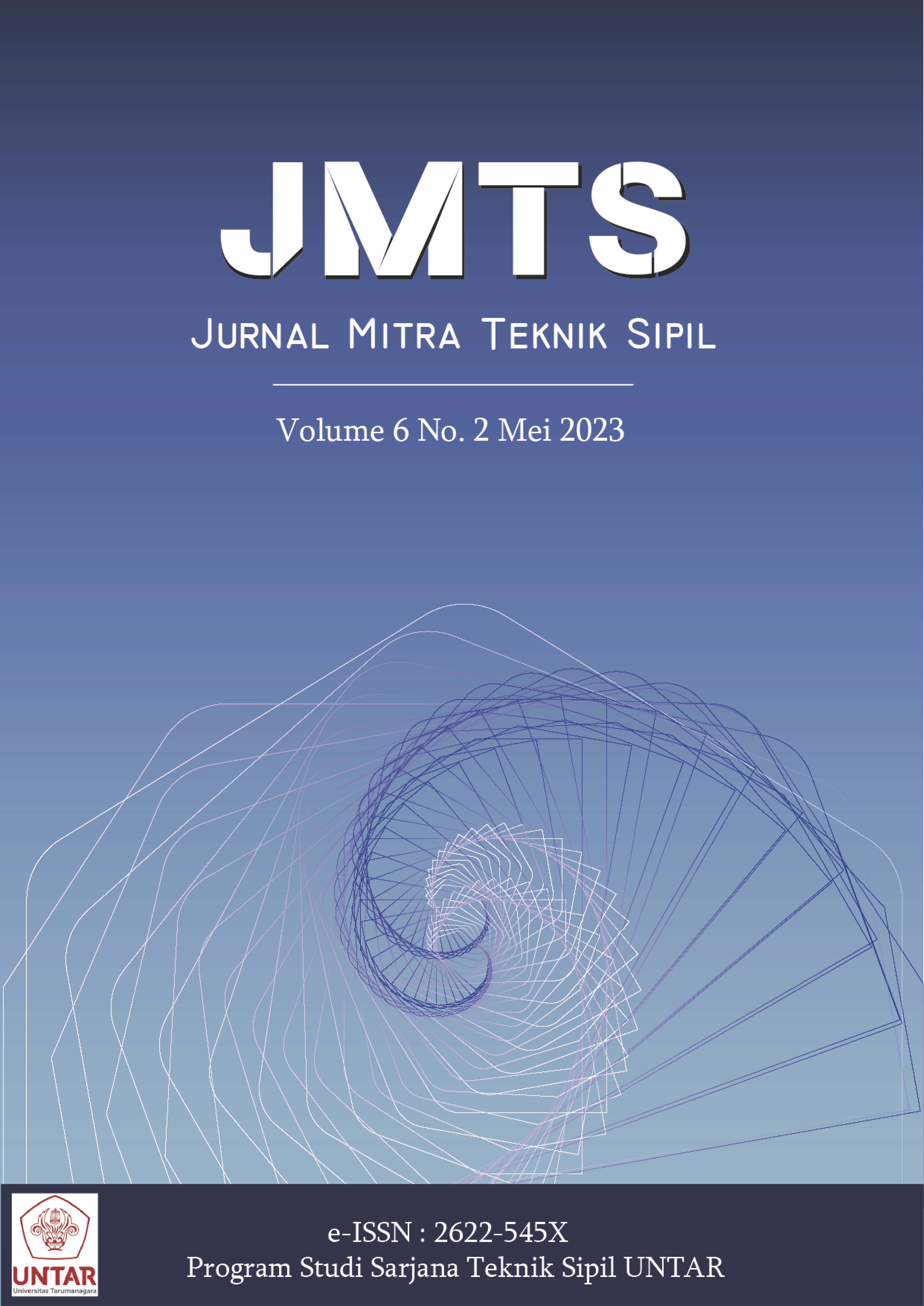IDENTIFIKASI WASTE PROYEK INFRASTRUKTUR TRANSMISI LISTRIK DENGAN VALUE STREAM MAPPING
Isi Artikel Utama
Abstrak
Based on the performance report of the Directorate General of Electricity 2020, the percentage of performance achievements in adding electric power transmission is 58,17%. The electricity transmission project itself is a complex project because it consists of many stages of work that are interrelated with each other, spread over many locations and involve many stakeholders. This type of project is generally difficult to control and contributes a lot of activities that should not be needed (waste) which leads to delays in project completion. The purpose of this study is to identify waste based on the concept of lean construction in power transmission projects. The research was conducted in the 500 kV Sumatera Package 3 transmission project and was descriptive qualitative as measured by quantitative methods. The research begins with taking actual data in the field with working papers filled out by each personnel related to the work to be mapped. Existing waste is obtained from mapping carried out using lean construction Value Stream Mapping (VSM) tools. The results show that the largest waste in the Transmission project is waste Waiting with an average of 2,29 and the lowest waste is Inventory with an average of 0,14 with the order of the largest waste to the smallest waste, namely Waiting, Defects, Overprocessing, Motion, Overproduction, Transportation, and Inventory.
Abstrak
Berdasarkan laporan kinerja Ditjen ketenagalistrikan 2020, persentase capaian kinerja penambahan transmisi tenaga listrik adalah 58,17%. Proyek transmisi listrik sendiri merupakan proyek yang kompleks karena terdiri dari banyak tahapan pekerjaan yang saling berkaitan satu sama lain, terpencar pada banyak lokasi serta melibatkan banyak stakeholder. Tipe proyek seperti ini pada umumnya sulit dikontrol dan menyumbangkan banyak aktivitas yang seharusnya tidak diperlukan (waste) yang berujung kepada keterlambatan penyelesaian proyek. Tujuan dari penelitian ini adalah untuk mengidentifikasi pemborosan (waste) berdasarkan konsep lean construction pada proyek transmisi listrik. Penelitian dilakukan di proyek transmisi 500 kV Sumatera Paket 3 dan bersifat deskriptif kualitatif yang diukur dengan metode kuantitatif. Penelitian dimulai dengan pengambilan data aktual di lapangan dengan kertas kerja yang diisi masing-masing personil yang berkaitan dengan pekerjaan yang akan dipetakan. Pemborosan (waste) eksisting diperoleh dari pemetaan yang dilakukan dengan tools lean construction Value Stream Mapping (VSM). Hasil penelitian menunjukkan bahwa pemborosan (waste) terbesar pada proyek transmisi adalah Waiting dengan rata-rata sebesar 2,29 dan waste terrendah adalah Inventory dengan rata-rata 0,14 dengan urutan waste terbesar ke terkecil yaitu Waiting, Defects, Overprocessing, Motion, Overproduction, Transportation dan Inventory.
Rincian Artikel

Artikel ini berlisensiCreative Commons Attribution-NonCommercial-ShareAlike 4.0 International License.
This work is licensed under Jurnal Mitra Teknik Sipil (JMTS) Creative Commons Attribution-ShareAlike 4.0 International License.Referensi
Abduh, M. (2007). Konstruksi Ramping : Memaksimalkan Value dan Meminimalkan Waste. Prosiding 25 Tahun Pendidikan Manajemen dan Rekayasa Konstruksi di Indonesia. Bandung: Fakultas Teknik Sipil dan Lingkungan ITB.
Agus. (2015). Telaah Kebijakan Ketenagalistrikan Presiden Joko Widodo : Tantangan dan Prospek.
Alwi, S., & Hampson, K. (2002). Non Value-Adding Activities : A Comparative Study of Indonesian and Australian Construction Projects. Proceedings IGLC-10. Gramado, Brazil.
Gaspersz, V. (2007). Lean Six Sigma For Manufacturing and Service Industries. Jakarta: Gramedia Pustaka Utama.
Hines, P., & Taylor, D. (2000). Going Lean. Cardiff, UK: Lean Enterprise Research Centre.
Jasti, N. V., & Sharma, A. (2014). Lean Manufacturing Implementation Using Value Stream Mapping as a Tool. International Journal of Lean Six Sigma.
Ketenagalistrikan, D. J. (2021). Statistik Ketenagalistrikan 2021. Kementerian Energi dan Sumber Daya Mineral.
Lasa, I. S., & Laburu, C. O. (2008). An Evaluation of the Value Stream Mapping Tool. Business Process Management Journal, 39-52.
Liker, J. K., & Meier, D. (2006). The Toyota Way Fieldbook : A Practical Guide for Implementing Toyota's 4Ps. New York: The McGraw-Hill Companies, Inc.
Pall, G. K., & Bridge, A. J. (2016). Comprehensive review of Delays in Power Transmission Projects. IET Generation Transmission & Distribution.
Pall, G. K., & Bridge, A. J. (2019). Causes of Delay in Power Transmission Projects : An Empirical Study. Energies.
Perpres, N. 4. (2016). Peraturan Presiden Nomor 4 : Percepatan Pembangunan Infrastruktur Ketenagalistrikan.
Robbani, B., & Sandhyavitri, A. (2019). Identifikasi Faktor yang Berpengaruh terhadap Kinerja Waktu Pelaksanaan Proyek Pengadaan Transmisi 500 kV Sumatera. RACIC, 4 No. 2.



